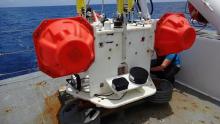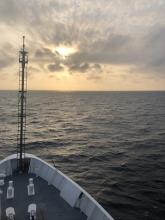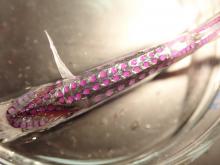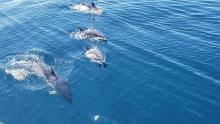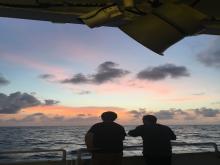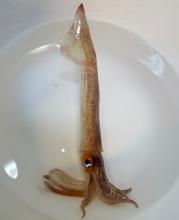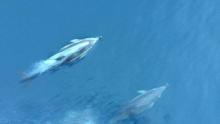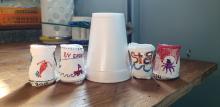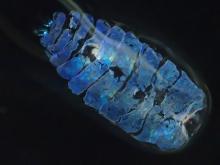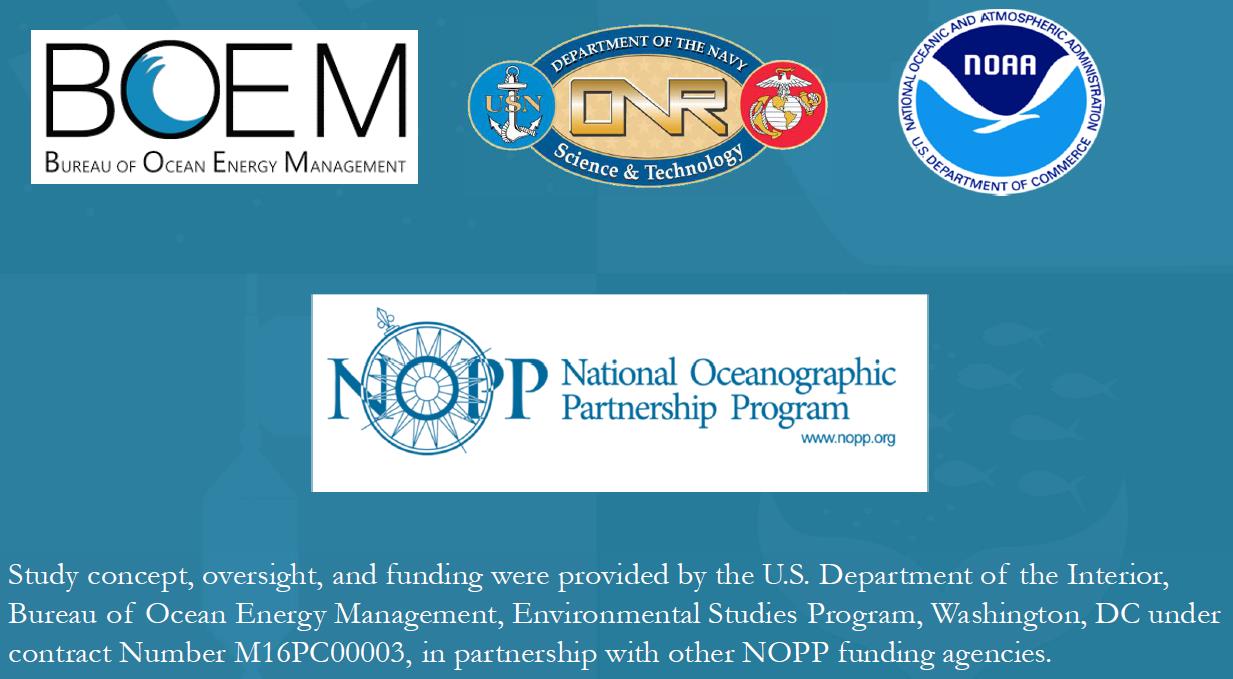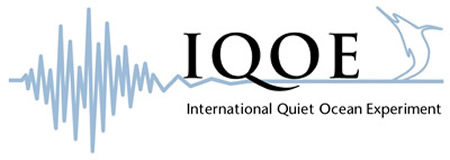We have reached the end of this stage of our fieldwork and have begun the transit home. This marks the end of a very successful lander retrieval, refurbishment, and redeployment. It was a busy turnaround – with lots of worn away anodes to replace and corroded hardware to swap out. By the last station, we were working like a well-greased machine, and it wouldn’t have been possible without the amazing crew of the R/V Endeavor.
Tags
Day 18 aboard the Research Vessel Endeavor.
Dolphins have surrounded the boat since the moment we arrived on the VAC site. Large schools of tuna have been seen feeding frantically at the surface. Sharks have been spotted patrolling the surfaces, swimming with an unparalleled swagger that screams that they are not the ones to be trifled with. The flying bridge, above the navigation bridge, is the ideal place to see them. My favorite part of life on the ocean is the magnificent views and beautiful sunsets seen from atop the flying bridge.
Tags
Diel vertical migration, the largest movement of animals on the planet!
This is Sebastian Velez, your resident ichthyologist, checking in and ready to fill you in on some of the more fishy discoveries we’ve made on ADEON 2 thus far. We’ve sampled from a number of different depths during the nighttime to catch some of the organisms that migrate to shallower depths on a daily basis. Many of these deeper animals can create their own light (bioluminescence) using light-producing organs called photophores for a number of different uses including defense, camouflage, and attracting prey.
Tags
Life aboard a ship.
Life aboard a ship - Madison Alstede, June 21, 2018
Living on a ship is so different than anything I have ever experienced, both in a good and a bad way. The motion of the boat rocking back and forth is hard to get used to at first, but after a couple days at sea, and some motion sickness medicine, the rocking becomes almost unnoticeable. Some nights the rocking of the boat can rock you to sleep. Alone time is sparse. There are only so many spots you can hide from other people on a 180 ft boat, and it is easy to get frustrated with people you are with every waking moment.
Tags
Fishing methods: Draggers versus Longliners.
Since rounding Cape Hatteras we have not only been encountering a lot more life on our echo sounders, but a lot of marine mammal and human life as well! This morning we were surrounded by not only pods of common dolphins, but also commercial fishing vessels. These vessels use large tube shaped nets called otter trawls to scoop up fish from the bottom.
Tags
Below the continental shelf where many interesting-looking deep sea fish live.
We sent our last deep tow down to more than 1300 meters, and collected some really cool critters! We moved a bit further offshore where the continental shelf drops off so that we can send a net even deeper down in the water column. As usual, we caught many interesting-looking deep sea fish.
Tags
Dolphin-Spotter’s paradise
Hello, this is Andrew Heaney yet again. This morning, I woke up to see a total of over a hundred Short-beaked common dolphins, surrounding the boat for hours on end. They were performing many different behaviors, including bow-riding, breaching, porpoising, slow-rolling, and even possible feeding!
Tags
Farting Fish
Did you know fish fart? As they go deeper in the water, the pressure forces the gases out of their system aka a fart. These gas bubbles can actually be detected by acoustics and help to identify certain types of fish. Pressure increases one atmosphere roughly every ten meters.
Tags
Copeblog by Cassie Fries
The animals we find, big or microscopic, are always interesting finds. We have been finding some awesome deep-sea creatures in our tows! I am tasked with helping identify copepods, a very small crustacean that is abundant in the water column.
Tags
Mowing the Lawn.
So one of the tasks that the night shift does during the ADEON cruise is “mow the lawn” – this is our shorthand for running a series of parallel transect lines where we use our echosounder to look at where the deep scattering layers are in the water column and how that changes as we move over an area roughly 10 km by 10 km (~ 6 miles by 6 miles).
Tags
Pagination
- Previous page
- Page 10
- Next page
Copyright 2016 · All rights reserved

